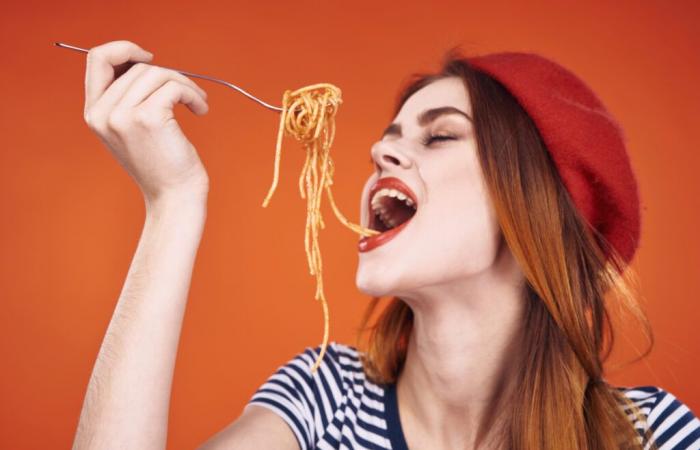Lit is starchy foodsit’s at every meal and according to appetite!, proclaims the National Nutrition Health Program (PNNS). Pasta, rice, semolina, legumes and even potatoes have their place on our plates every day.
Yet, we can’t help but look at them with suspicion when we try to control our figure, falsely lulled by this (erroneous) belief that “bread and pasta make us fat!” The reality is more nuanced. Often, this is what we enjoy with starchy foods (sauce, butter, jam, etc.) that impact our waistline, as well as the lack of fiber and protein alongside them. Taming them allows us to integrate them more intelligently into our menus. Especially since their role is essential: “Starchy foods are essential because they provide complex carbohydrates, a source of energy, recalls dietician Marjorie Crémadès.
Not all starches are equal
But although they are a source of complex carbohydrates – sugars normally released gradually in the body – all starchy foods are not equal. Depending on their nature (cereals, legumes, etc.), their composition (type of starch, fiber and protein content), their cooking method (oven, water, steam, etc.) and the foods with which they are consumed, their impact on blood sugar is not the same.
Which starches should you favor?
“The higher the protein and fiber content of a starch, the more filling it will be and the higher its glycemic index will be.” down, says Marjorie Crémadès. This is particularly the case for legumes.. Most of them are now offered in the form of pasta, which makes it easier to incorporate them into your diet when you are not used to cooking them. On the label, we just make sure that these “pastas” are made up of 100% legumes. Because often, the main ingredient remains wheat, IG higher.
Once drained, canned legumes make it easy to introduce starchy foods has IG down in his meal everyday: chickpeas in quinoa tabbouleh, hummus or chicken tagine; red beans in chili sin carne or tacos; green lentils in soup or as the base of a “vegetable steak”…
Alongside dried vegetables, buckwheat and quinoa – pseudocereals – have a IG average, just like all whole grains and flours.
Favor short and gentle cooking times
The way to cook the starchy foods also impacts their glycemic index. Cook white pasta until it is soft? “It’s a disaster on the blood sugar side!” Marjorie Crémadès warns.
It is better to opt for wholemeal pasta, which is richer in fibre, and cook it al dente. Similarly, pasta cooked in the oven (lasagna, cannelloni, pasta gratin precooked in water, etc.) will display a higher glycemic index than pasta cooked in water. “The starch contained in the starchy foods tends to burst when cooked at high temperatures, emphasizes dietician Marie-Laure André. For example, it is better to steam a potato gently than to bake or fry it. Although the potato remains a food with a high glycemic index, due to its starch profile.
UA tip for putting them on the menu while limiting their impact on blood glucose levels: let them cool. “Prepared as a salad, steamed potatoes have a IG more down than the same potatoes eaten hot. The starch they contain retrogrades and thus takes longer to be digested. This is also the case for rice and pasta eaten in salads.
How to lower theIG of a meal
Is there white rice on the menu? Baked potatoes or polenta (cornmeal)? Here are some starchy foods has IG high that it is better to limit, when you are trying to keep the line. It is nevertheless possible to counterbalance their effect on blood sugar (and therefore, on weight gain), by integrating them into a well-thought-out plate.
” We accompany them cooked and/or raw vegetables whose fibers will trap sugars and therefore slow down the absorption of carbohydrates, specifies Marjorie Crémadès. A source of animal or vegetable protein is also added on his plate. Associate the starchy foods vegetables and proteins allows you to be satiated for a long time, and therefore avoid snacking between meals. meal. Because it is snacking that makes you gain weight!” recalls our expert.
Likewise, we invite a little good fat (rapeseed oil, but also oilseeds, seeds, etc.) into our dish to lower theIG.
Another tip: “Consuming lemon juice or vinegar during the meal also helps to slow down – a little – the passage of sugars into the blood. For example, you can enjoy a green salad drizzled with vinaigrette as a starter, or pour fresh lemon juice into your glass of water,” advises the dietician.
Our experts:
Marjorie Crémadès, dietician-nutritionist Dietetique-nutrition-alimentation.fr
Marie-Laure André, dietician-nutritionist, Passionnutrition.com Marielaureandre.fr






